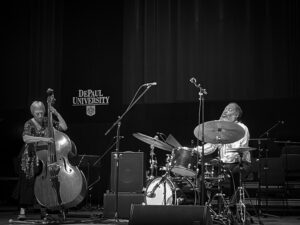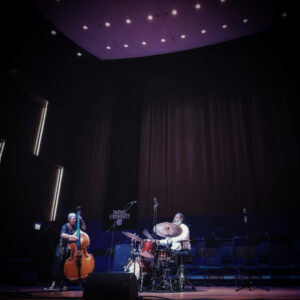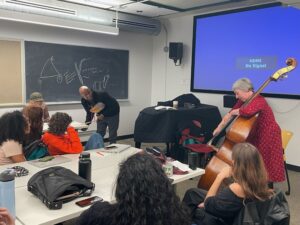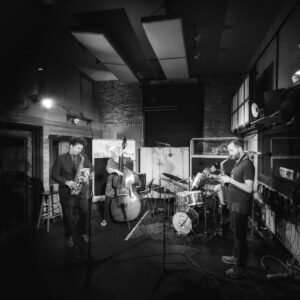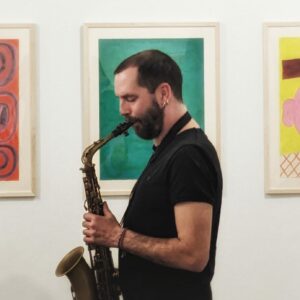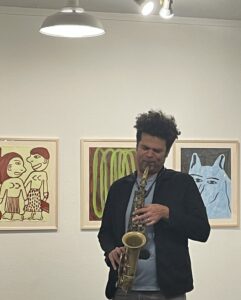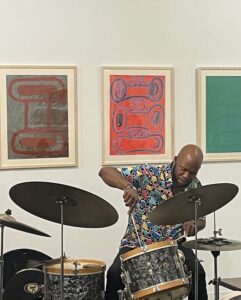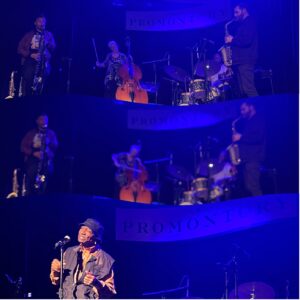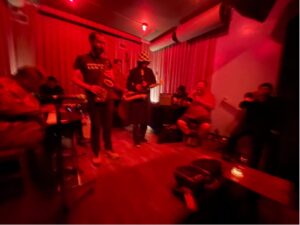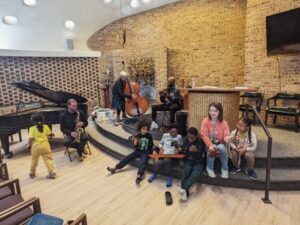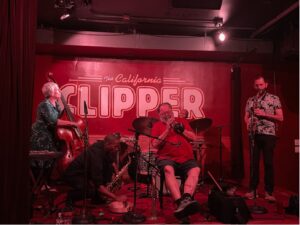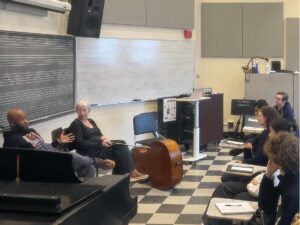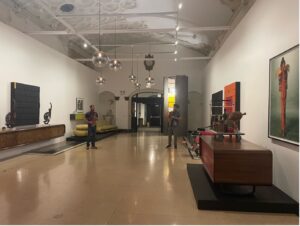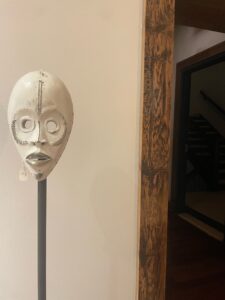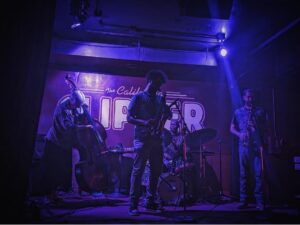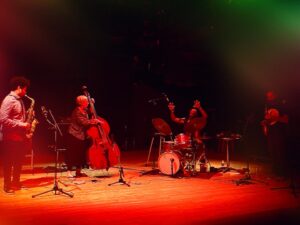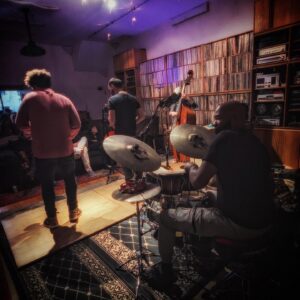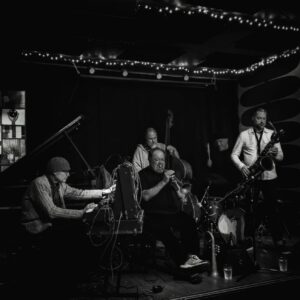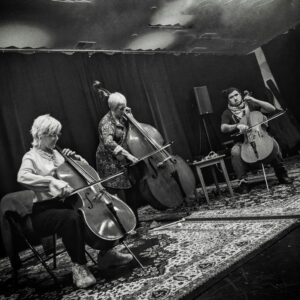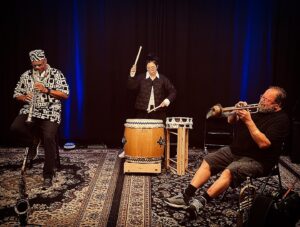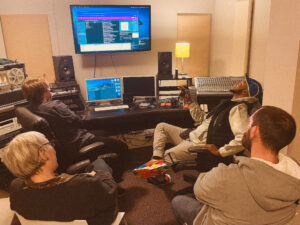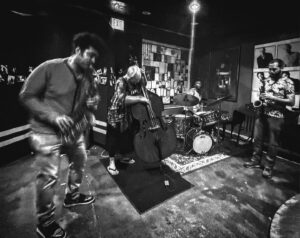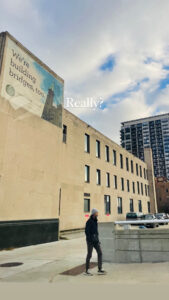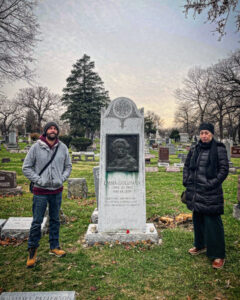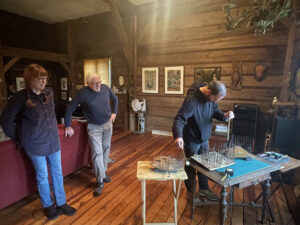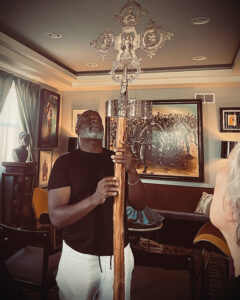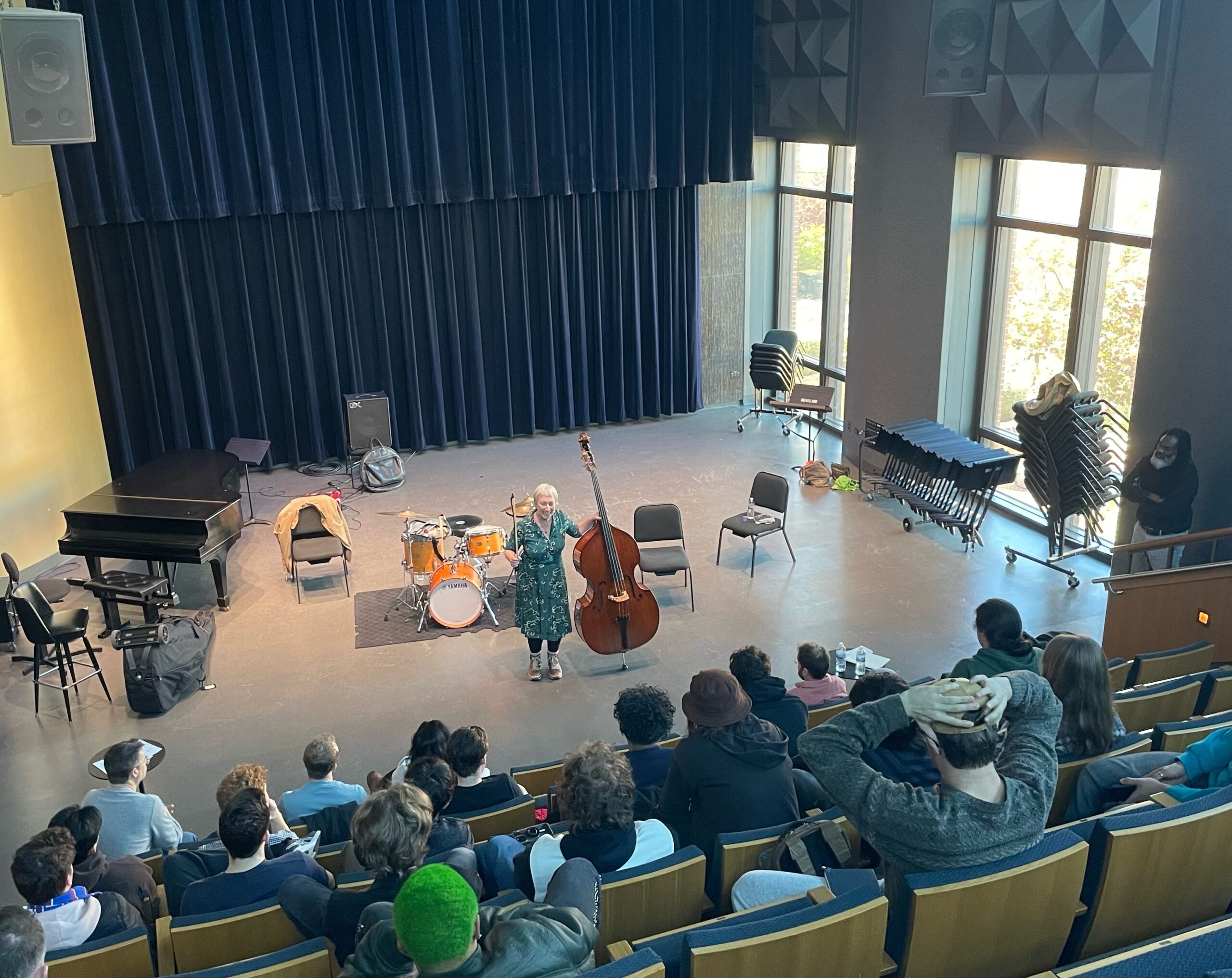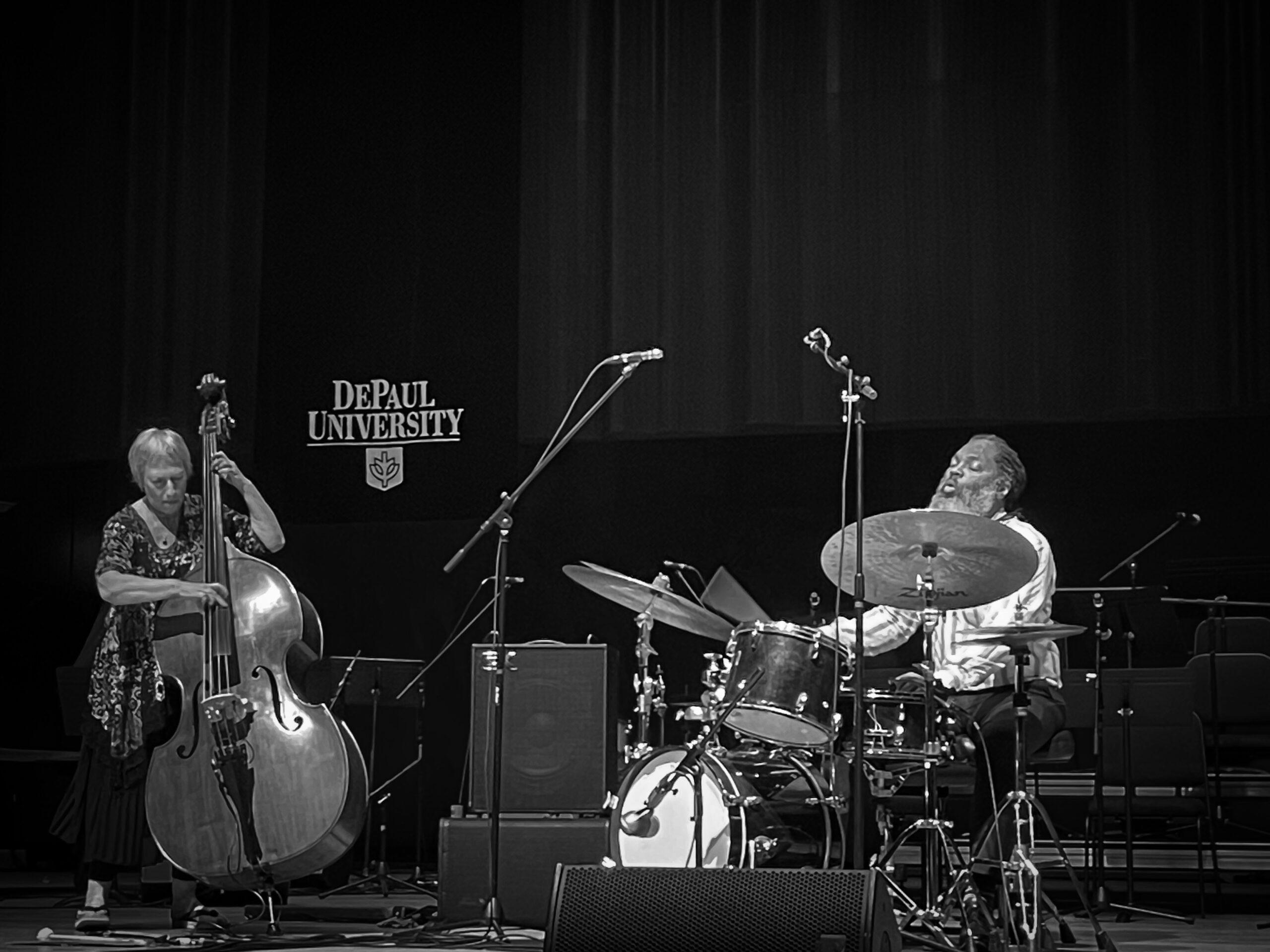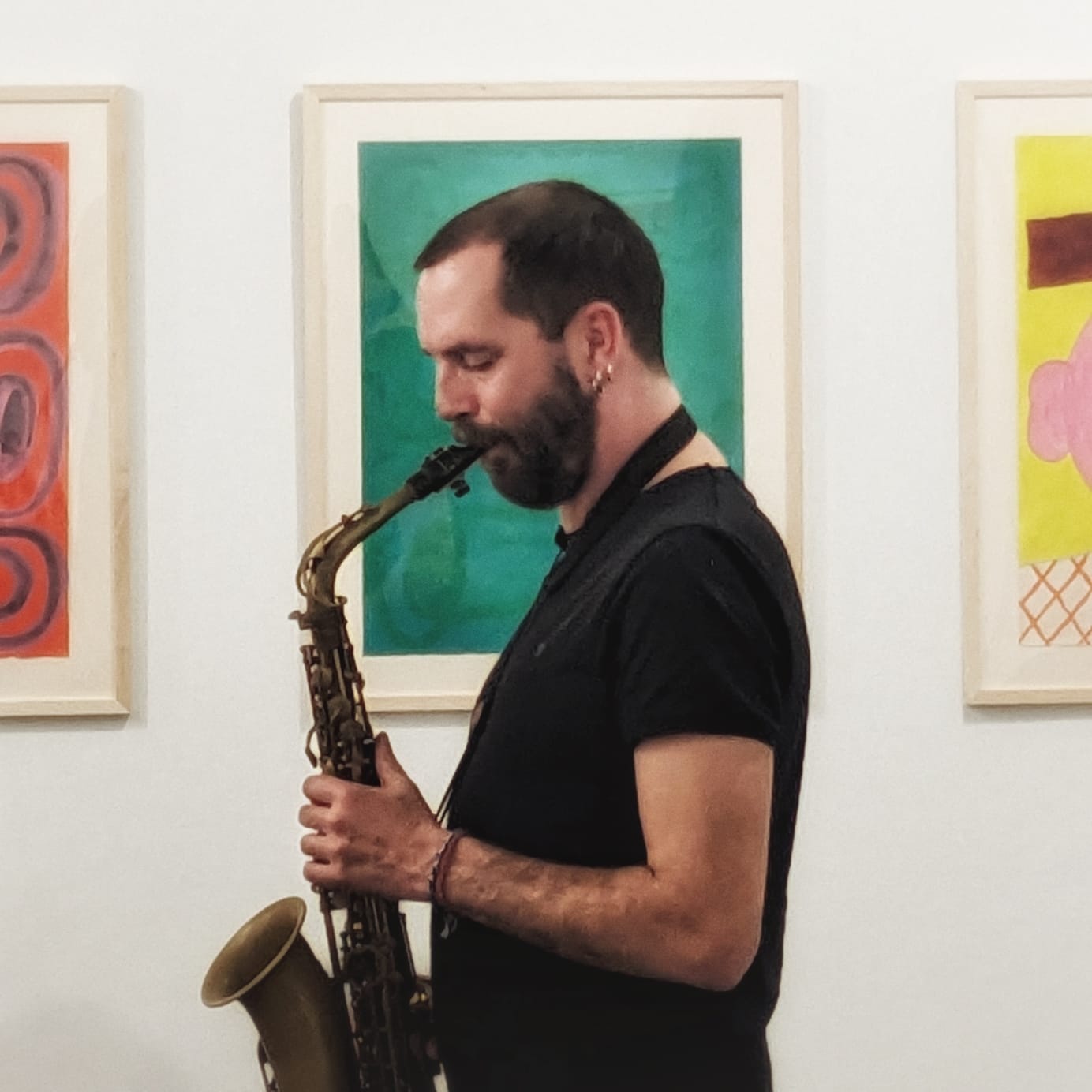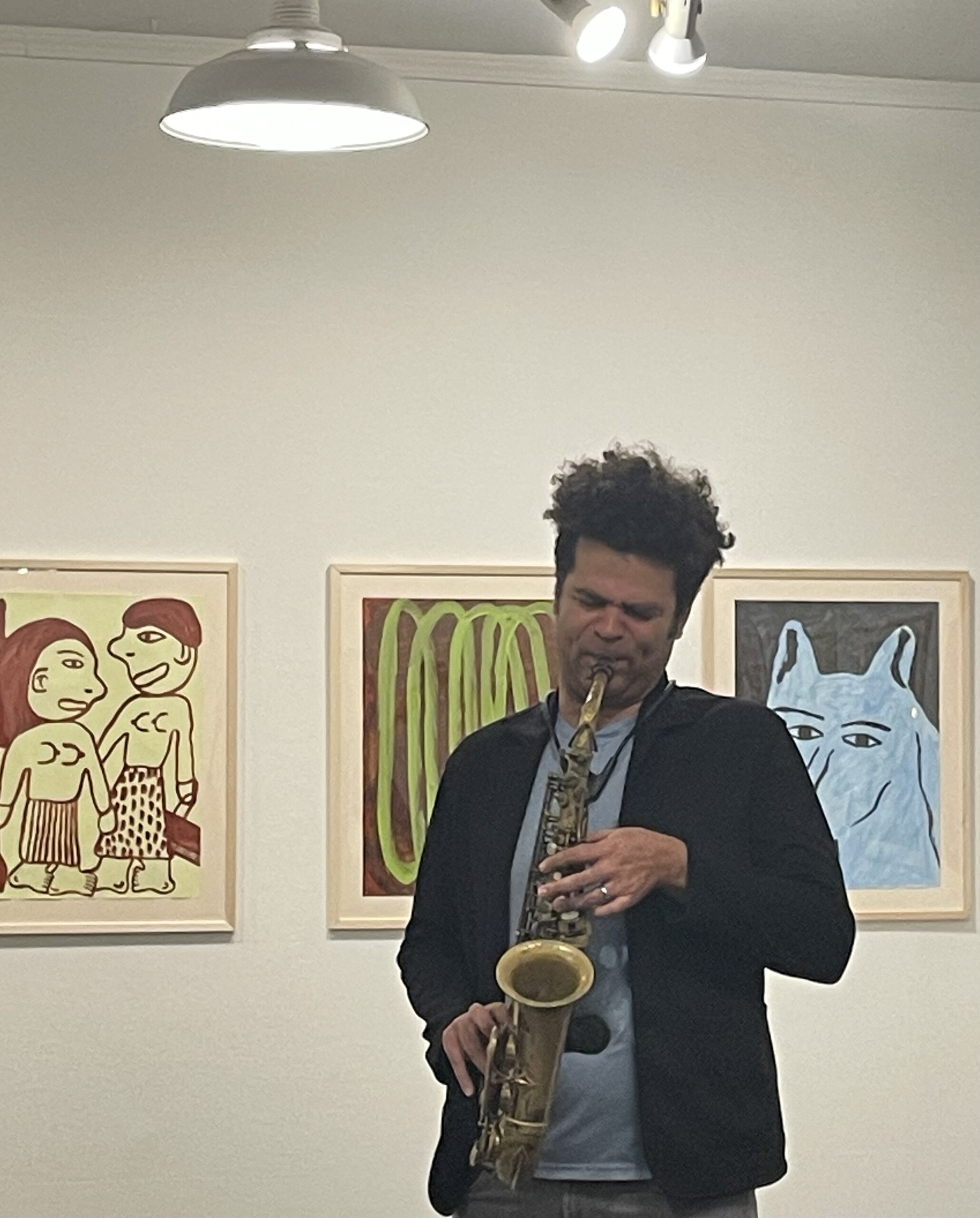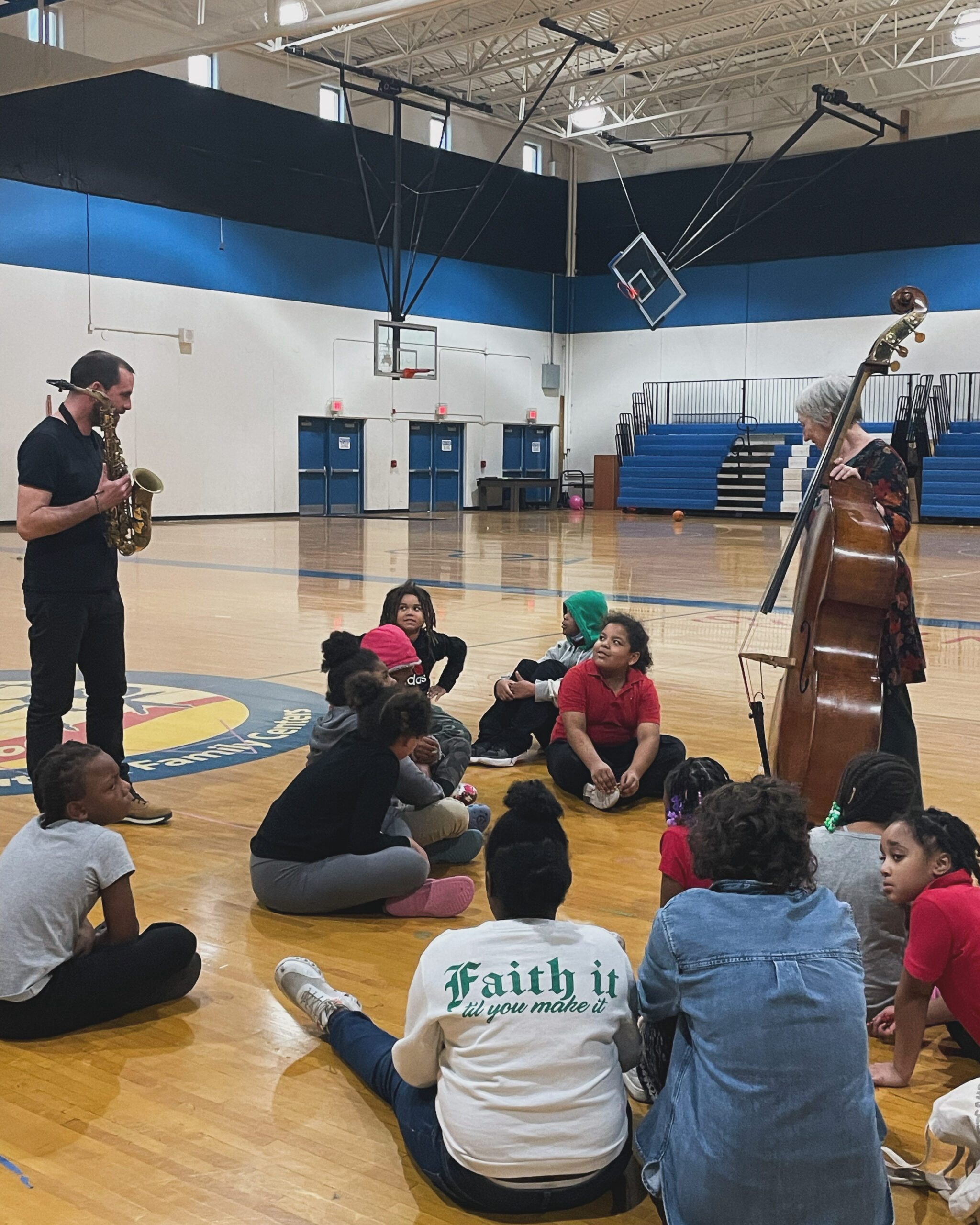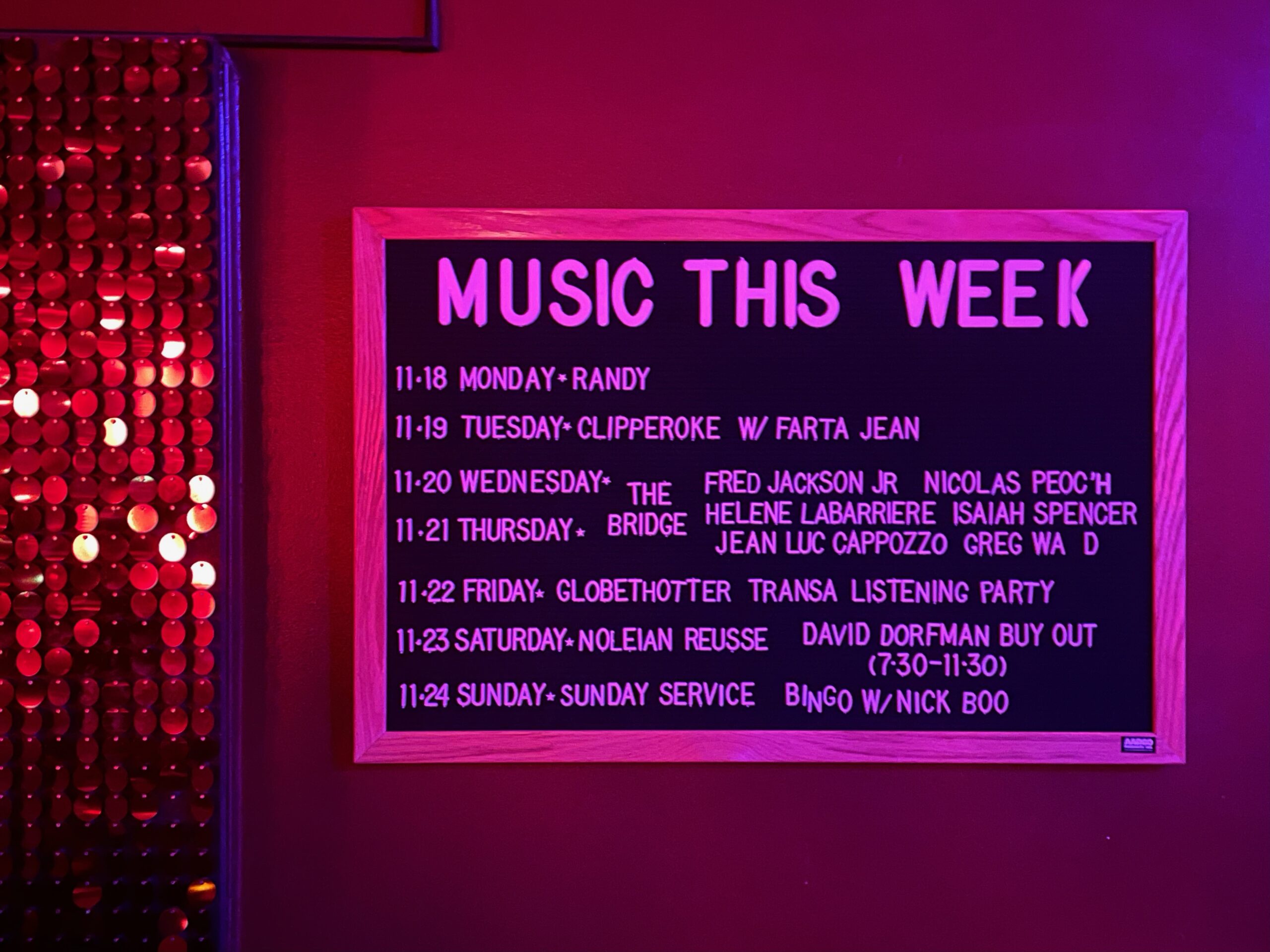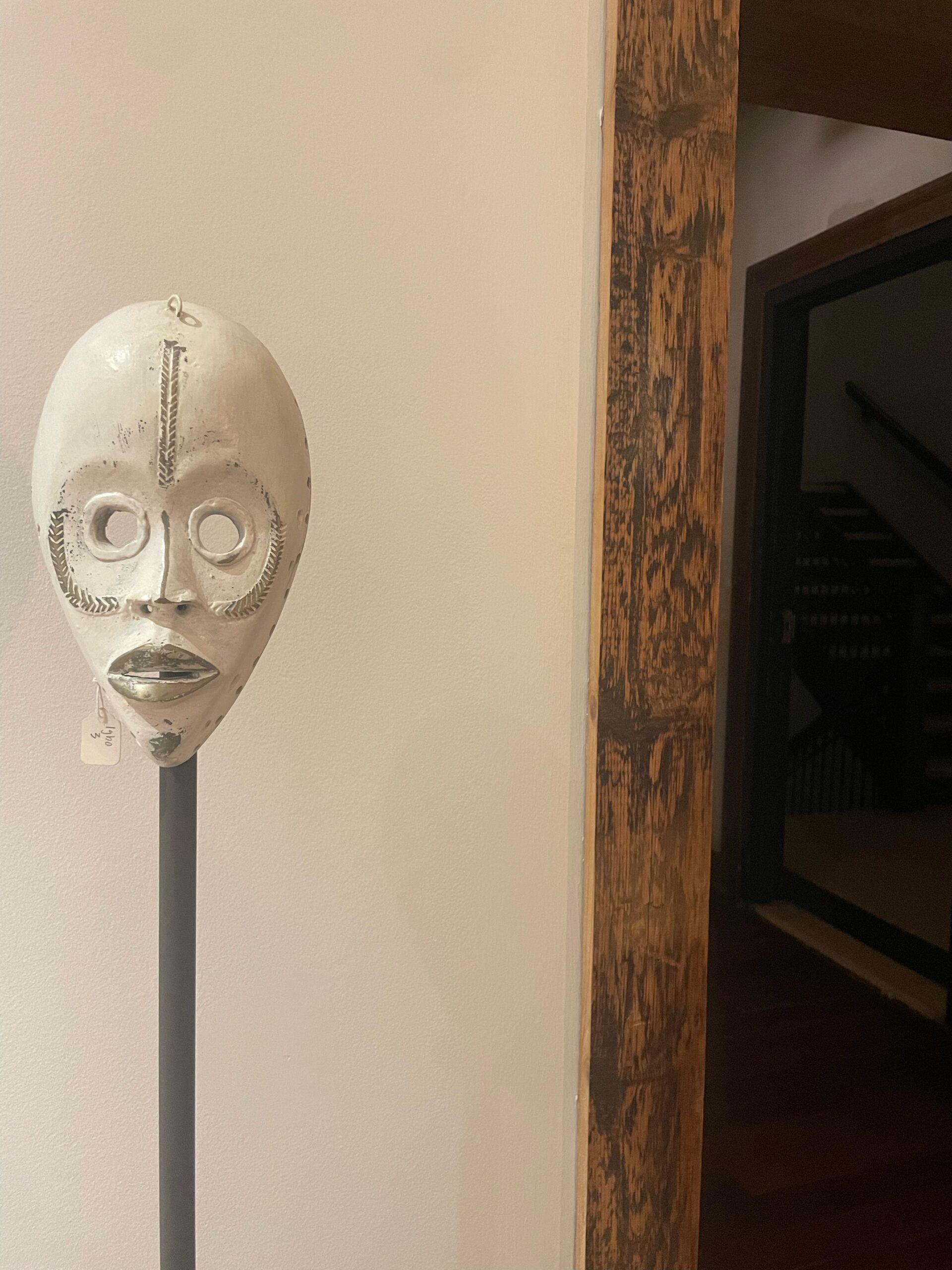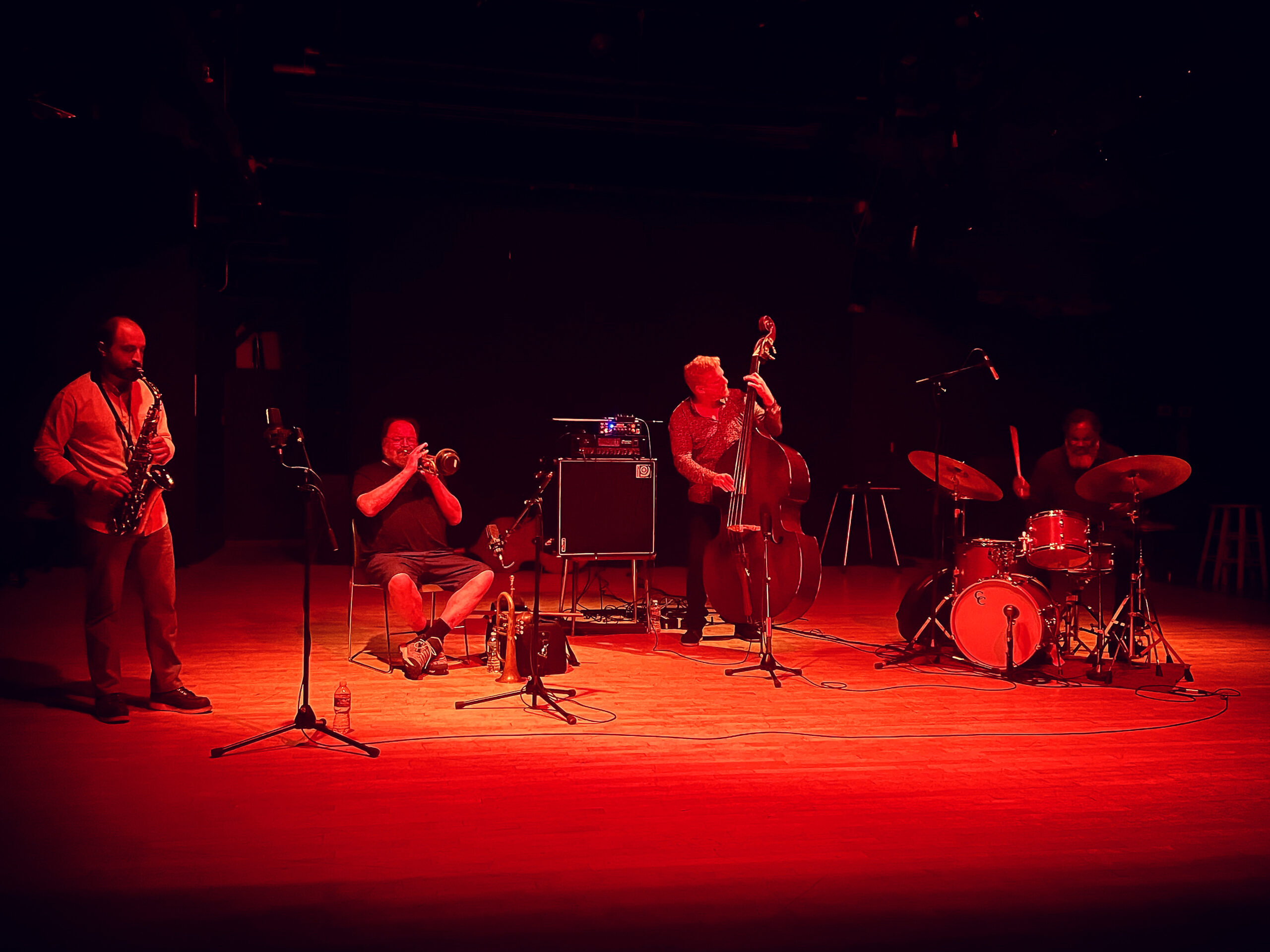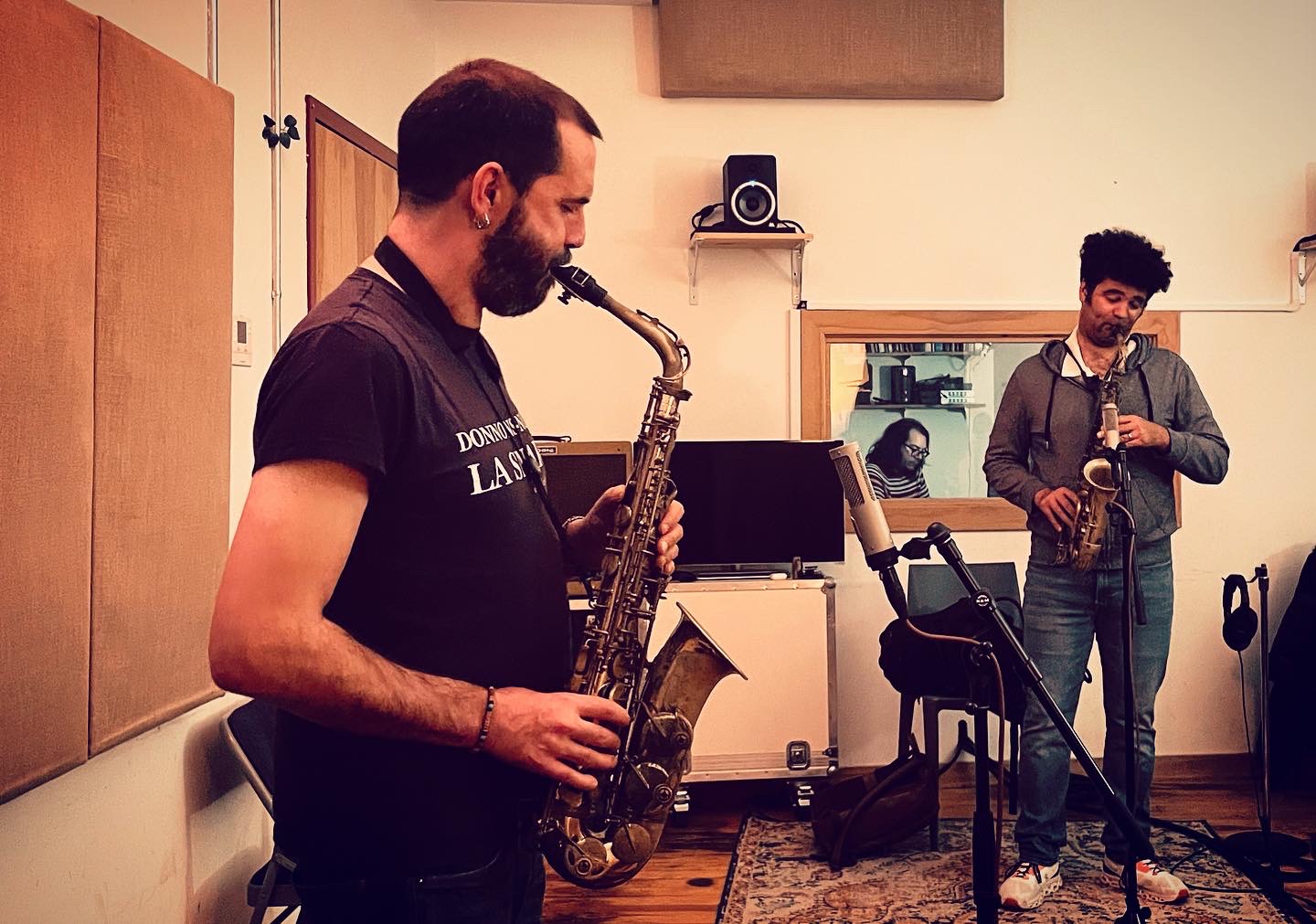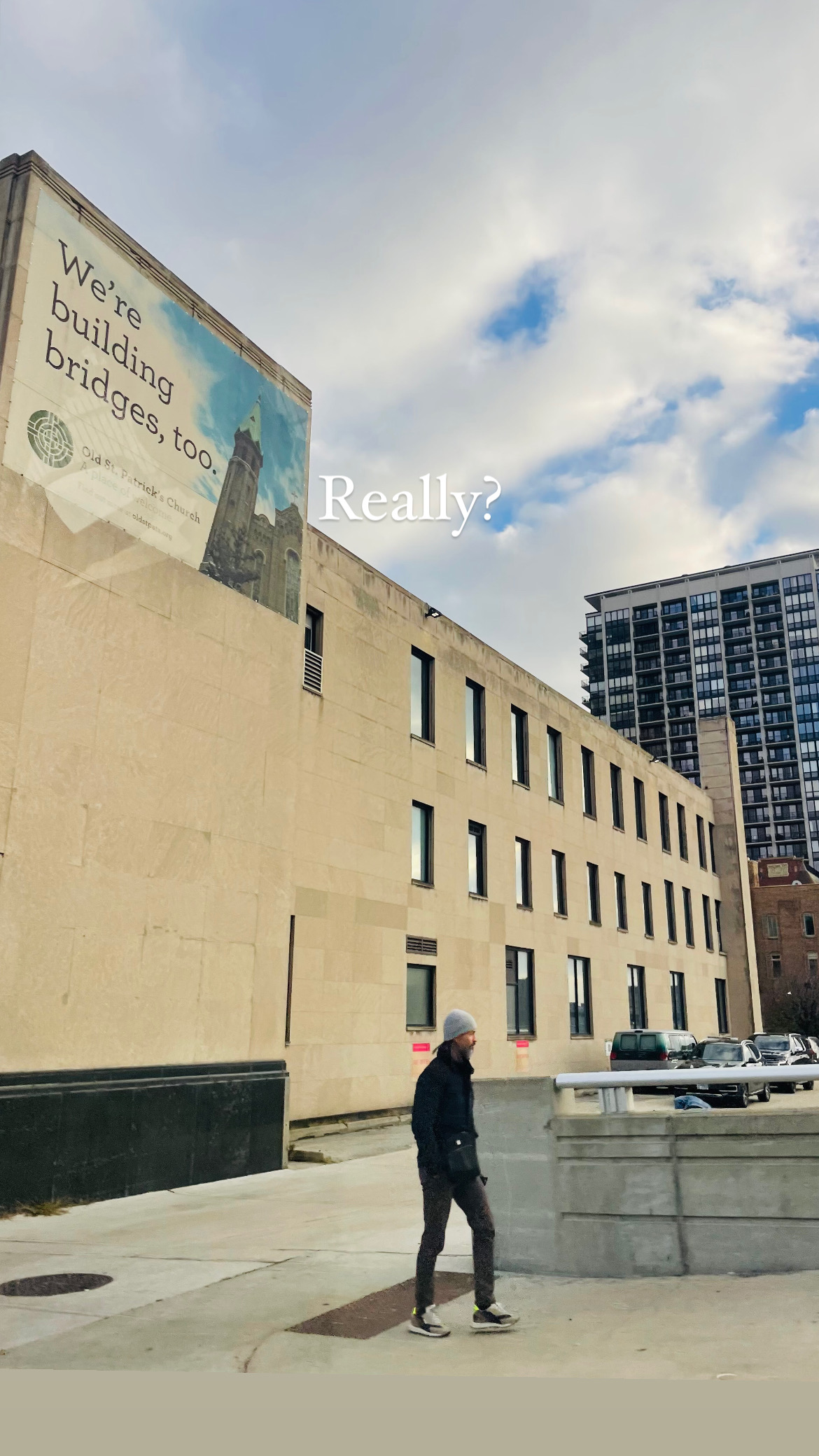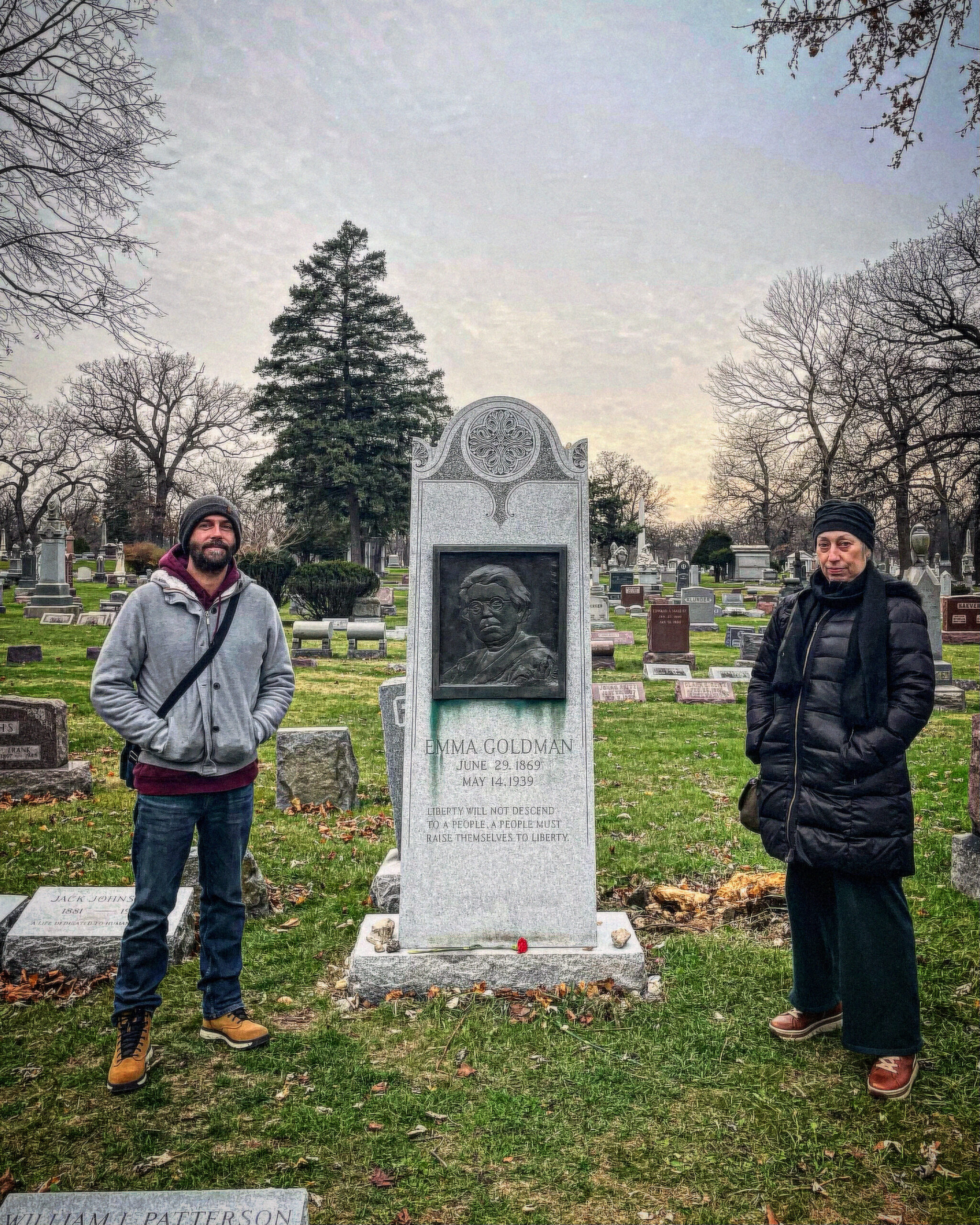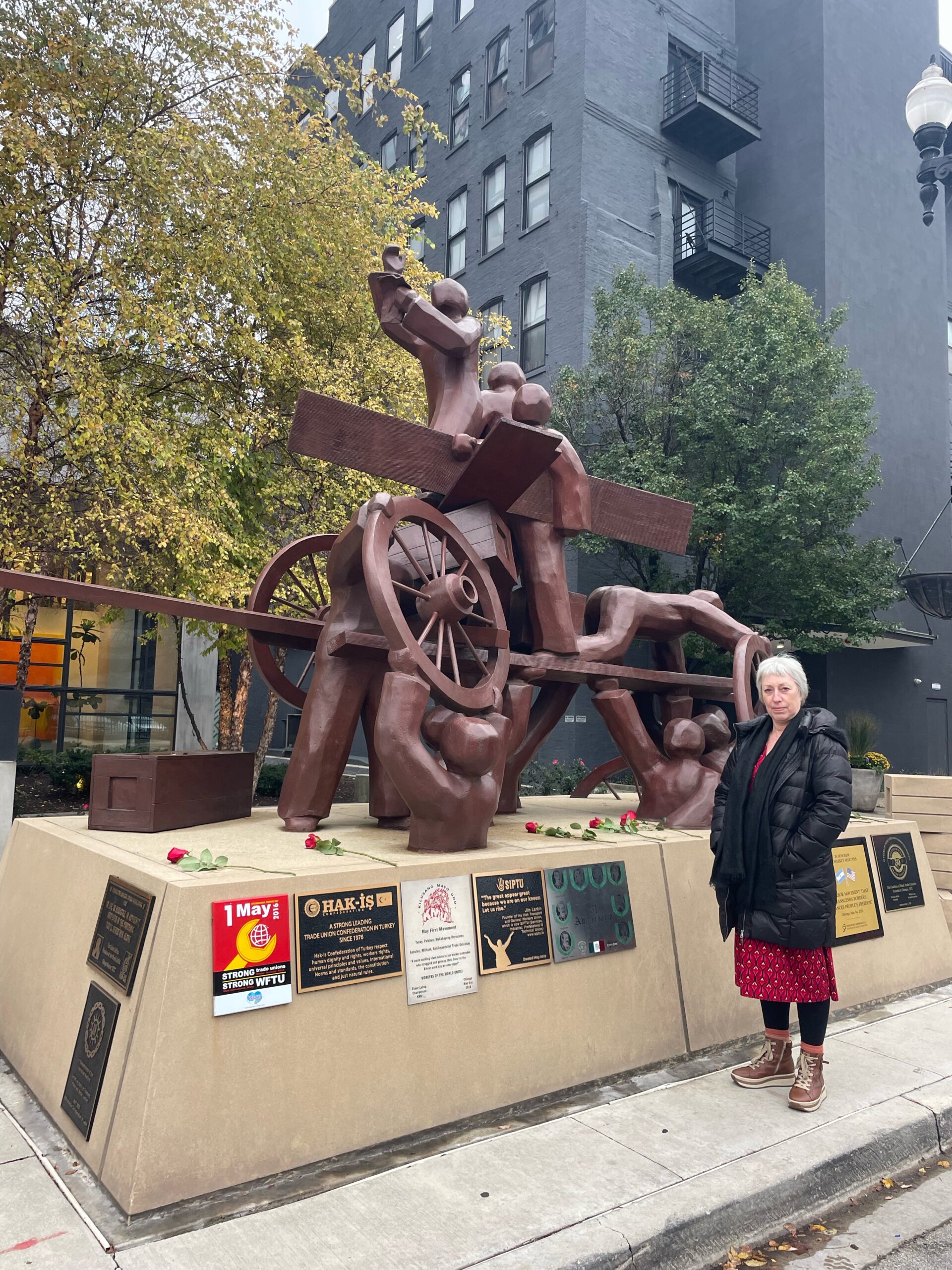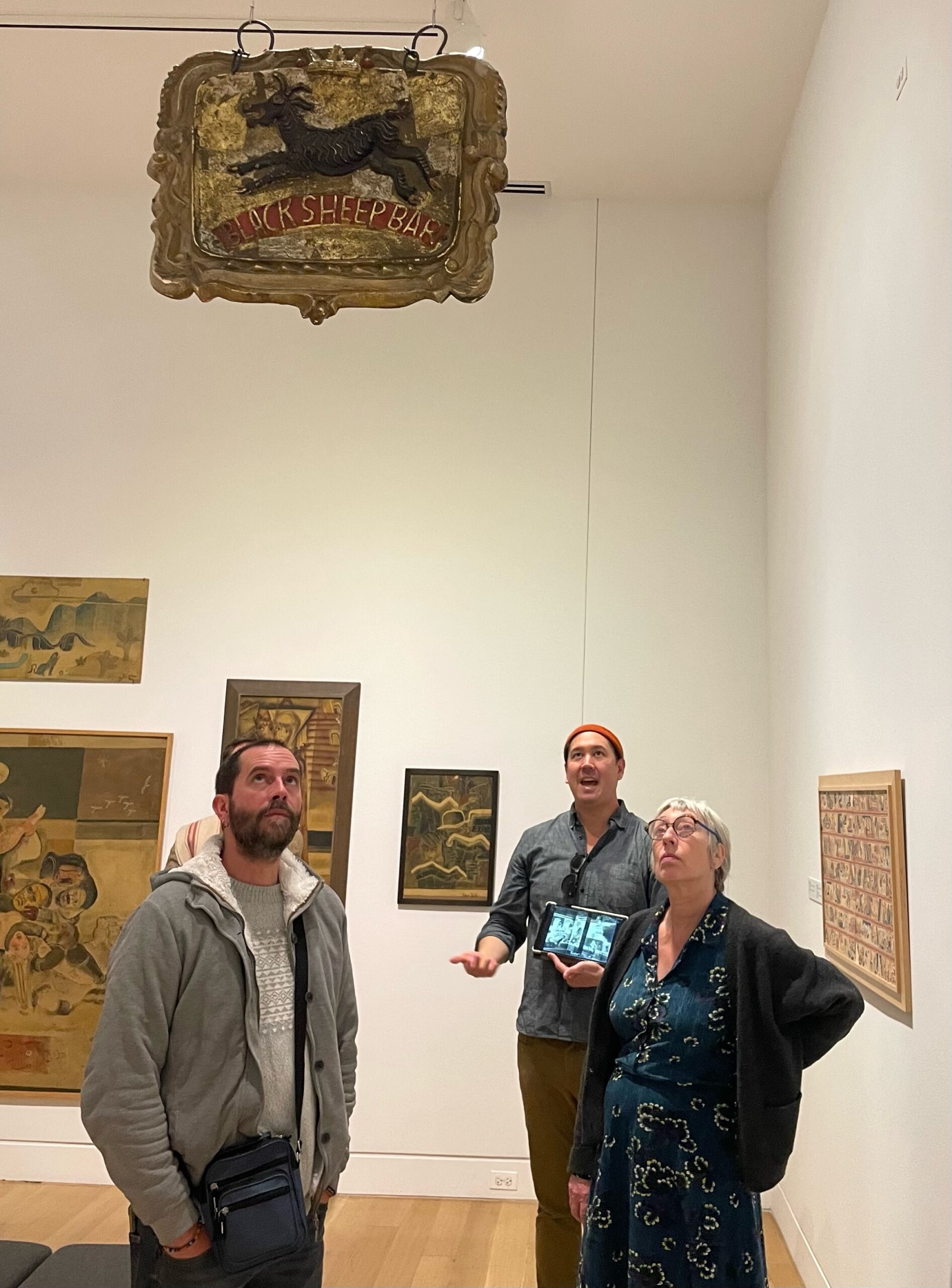Greg Ward — alto saxophone
Nicolas Péoc’h — alto saxophone
Hélène Labarrière — double bass
Isaiah Spencer — drums
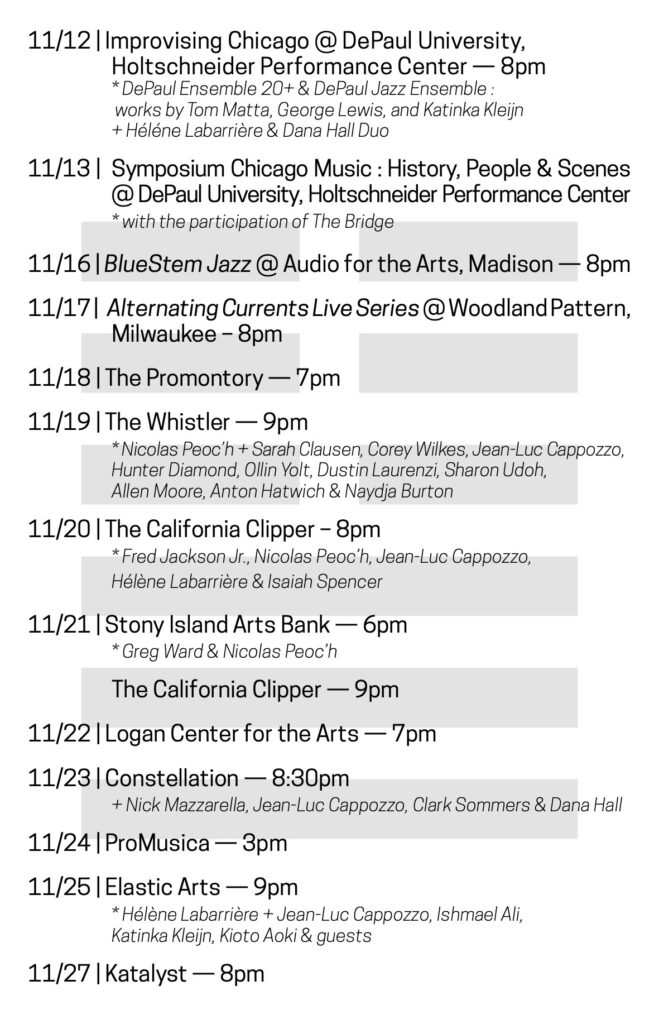
Improvising musicians meet in the world, in real life, to really be together – human beings on Earth – to feel and propagate vibrations, to plunge into the same cosmic flow, then send it back out into the universe. At the very least. Hélène Labarrière remembers this happening at the Café de l’Univers: “I was 15 when I discovered jazz. It wasn’t by listening to a record, nor by going to a concert in a beautiful hall, no, it was in a tiny restaurant in the center of Paris. There, I saw and heard young musicians playing all night long. There were about ten of them, packed around an upright piano, double bass and drums, and from evening to morning they played. Some of them already knew each other, others not. That evening was a revelation for the teenager I was then, and from that day on, the desire for new encounters and unknown adventures has never left me. In a world where human beings are disappearing a little more every day in the name of profit, where freedom is being taken away from us in the name of war or health security, playing, laughing and singing seem to me more necessary than ever.”
We can’t say it often enough, so we’ll say it again: creative music creates singularity by recreating space-time. By bringing together approximate bodies, in the same place and on the same backdrop, at the same time, and from past to future, from present to future, and back again. From Chicago: Greg Ward, one of the most agile and zesty saxophonists of his generation, a distant descendant of Johnny Hodges and a close partner of Mike Reed, a worthy disciple of Von Freeman or Fred Anderson, i.e. unique in his genre (free funk swing or otherwise), whom nothing frightens, in a flash or a plume of smoke; Isaiah Spencer has also proven himself on the Chicago stage or belvedere, since his apprenticeship with Ernest Khabeer Dawkins : his (hypersensitive) drumming is obviously propulsive, is naturally ardent, he feigns a certain nervousness to adhere to everything going on around him and more. From France and Brittany : double bassist Hélène Labarrière sails and capsizes freely over the equator, the tropics and even the meridians, thanks to the submarine of the most liberated (unsubdued) jazz, but also on the sailboats of so-called traditional music or the steamships of so-called contemporary music; Nicolas Peoc’h frequents the same casino, the same roulette table between aesthetics that are as many numbers for his ball or his saxophone, with in truth the same love for the game, for playing: he maneuvers and spins, this time with the mercury of jazz, from garage to Latin American to West African music.
No one can predict the outcome of their story, except that it began as a story and will end as a story. At least this one, to begin with, to play with: improvising musicians meet – human beings on Earth – to melt backgrounds. To sift through the “here and now” in search of ephemeral or eternal nuggets of gold. 22 black odd and lacking.
November 12 & 13, DePaul University. For two days we haunted the premises, with Hélène Labarrière arriving early, on the occasion of the Chicago week of the Popular Music Study Group, itself an offshoot of the American Musicological Society. LN first gave a masterclass as part of the “jazz program”, but not only, under the all-seeing eye and supervision of Dana Hall. We talked about Montreuil and Mali, and the many machinations involved in making this planet not just an inhabited world, but a habitable one. For the new “Transatlantic Amazon Gods and Goddesses” that we all are? Is this what philosopher Frédéric Neyrat calls “the planetary condition”? That evening, when the time was right, LN and Dana walked the talk at the Holtschneider Performance Center, after two student orchestras (the DePaul Jazz Ensemble, and the DePaul Ensemble 20+, which performed pieces and systems conceived by George Lewis and Katinka Kleijn). Double bass and drums, rotation and axis of rotation, multiplication of axes of rotation, multi-directionality. Finally, the following day, we took part in the symposium, « Chicago Music : Histories, People, and Scenes », where it was a pleasure to hear what Andrew Hill (“Chicago was category-less, so people would come out to hear the music, so it was just an organic situation…”), Fred Anderson and The Experimental Band still have to teach us about how to proceed. Or Mahalia Jackson : “Monday morning, soon one morning, I’m going to lay down my cross, get me a crown… Soon as my feet strike Zion…”.
November 14, Magnífico Coffee Roasters. It’s said that the demon of noon finishes consuming himself in a coffee roaster, to spread his largesse, the one of which they say: “Magnífico Coffee Roasters is a celebration of connection, cultura, and community in every roast and in every sip”. And so it was, in front of a delegation of string players as Chicago knows how to send. In front of Joshua Abrams, Nick Macri, Jason Roebke, Steve Marquette and others, then, Hélène Labarrière solo celebrated connections, drifting to, drifting from Léo Ferré’s Avec le temps, Ornette Coleman’s Turnaround, but also Le roi a fait battre tambour… Some speak loudly and leave, while others – a digger, for example – disengage from the construction site across the street to come through the door and listen. To listen to what? To life as it is.
November 16, Audio for the Arts, Madison. Greg Ward, Nicolas Peoc’h, Hélène Labarrière and Isaiah Spencer, a.k.a. The Bridge 2#11, have been waiting for this for a long time, so they’ve barely met before they’re already playing. The complete Bluestem Jazz crew. And right from the start, they’re jugglers, acrobats, fire-eaters and bear-walkers, playing in all directions, high, low, in the blur, in the light, one after the other and all together or two by two, intercepting each other, suspending each other, on their balancing wire. This bodes well for the future.
November 17, Woodland Pattern Book Center, Milwaukee. The concert series created by Hal Rammel 29 years ago in the last of the three enfilade rooms of this Babel bookshop for poetry, this series has never lived up to its name as well as tonight: Alternating Currents. The equation is as follows: GW +/- NP +/- LN +/- IS = the ideal key-ring for all mutations and permutations, for the circulation of forces and energies, the musical equivalent of Marcel Duchamp’s open and closed door at the same time. Or that multidirectional being that takes refuge in the comic strip that is Aero.
And then there are all the encounters on the fringe. Full margin. Full heart. For Nicolas Peoc’h and Hélène Labarrière with students from the COA Youth and Family Center in Milwaukee, responding to melodic-rhythmic cues to place their favorite animals in the course of an improvisation gradually won over by songs to share. Musical ivy. Or for Hélène Labarrière and Isaiah Spencer with students from Will Faber’s class at the School of the Art Institute in Chicago, summoned by the drummer to tell how they live in the city, how they assume their art, which must also be an art of living. And just how vulnerable and/or available do you have to be? Suddenly, the two improvise with the surrounding world: the floor, the ceiling, the walls, the chairs, the tables, the uprights of furniture and screens, objects, even a double bass. The power of imagination.
November 18, The Promontory. Opening the evening, James Wesley Jackson, the comedian who accompanied P-Funk in the 1970s, channels the spirit of Jess B. Simple, the hero and anti-hero of Langston Hughes, sprinkles his wisdom, when not delivering laughs: “We are not human beings searching for spirituality; we are spiritual beings searching for humanity…. Amen, or Hey Man. The opening continues with The Bridge #2.11. Without Greg Ward but featuring Kevin King on tenor saxophone, bass clarinet, and oboe, they propose this: to slow down, restrain all ongoing processes, and thoughtfully consider how even a single moment of inspiration can take form.
November 19, The Whistler. Years of hanging out in this iconic hub of musical conspiracies have taught us to expect one-night upstands, whirling into existence and then vanishing, cocktail in hand. Code name Relax Attack Jazz Series. Two sets, two storms with distinct configurations. Present throughout, behind, in front, within, and around—like genies out of a bottle—are Allen Moore (electronics, turntables), Sharon Udoh (keyboards), Anton Hatwich (double bass), and Naydja Bruton (drums). The first set unfolds like a typhoon of wind instruments embodying the four elements: fire with Xris Copal (tenor saxophone, flute), air with Nicolas Péoc’h (alto saxophone), water with Jean-Luc Cappozzo (trumpet, flugelhorn, reed flute), and earth with Corey Wilkes (trumpet, percussion). The second set transforms into a four-headed hydra slicing through the air, with Péoc’h and Sarah Clausen (alto saxophones), alongside Hunter Diamond and Dustin Laurenzi (tenor saxophones). and Dustin Laurenzi (tenor saxophones).
November 20 & 21, California Clipper. Nicolas Péoc’h, Hélène Labarrière and Isaiah Spencer, in the absence of Greg Ward, welcome three visitors: from Chicago, Fred Jackson Jr. on alto sax and percussion; straight from Luzillé, Jean-Luc Cappozzo on trumpet, flugelhorn and shepherd’s flute (who will even take an air solo, as if air itself were a musical instrument); from all over the world: the sand and sky of inspiration, crossroads and half-hidden kingdoms, the explosion of joy of the blues, rituals and the return to calm. Alto Madness, the aftermath of alto madness. The following day, for the second evening in the bar with its scarlet sconces, The Bridge #2.11 is back in full force, with Greg Ward. It’s all in the measure, in the measures, and in the spending. Oscillations, shifts and a few antics. The square and compass of the two alto saxophones, the anchor and arch of the double bass and drums.
November 21, Stony Island Arts Bank. A few spells. Under the gaze of African statues and American furniture that African-American culture paired so boldly (and championed by Ebony magazine founder John H. Johnson), Nicolas Péoc’h and Greg Ward explore the resonances of suns and silences. As part of Rebuild Foundation’s oral history project, they’re interviewed publicly by pianist Sharon Udoh—enthusiasm incarnate—on three topics: space, time, and individuals.
November 22, Logan Center for the Arts. After a day of meetings and discussions centered on The Bridge and other connections between Chicago and France—in a world prone to to cutting off or closing down anything that moves or sticks out,—LN opens the musical compass and all angles once more. Many of them will be opened one after the other, yet in a circle, over the next hour. From one to another, from one to all, tightrope walkers one, meteors others. From the audience, a man cries out in delight: “THAT… is naaaaasty!”
And there are all the moments on the margins. Heartfelt, full-hearted. For Nicolas Péoc’h, diving into liberating musical mathematics with the students of ChiArts (Chicago High School for the Arts). For Hélène Labarrière, exploring the thoughts of French students at Curie Metropolitan High School. And then from all angles and in the snow for Labarrière and Isaiah Spencer with students from the University of Chicago’s Music Department; and squared and multiplied for Labarrière, Péoc’h and Greg Ward with students from Roosevelt University’s Jazz & Contemporary Music Studies Department.. Or, most wonderfully of all, for Péoc’h, Labarrière and Spencer, at City Elementary Chicago, where a child from one of the three groups they review declares with obviousness that improvisation is not knowing what you’re doing, while knowing what you’re doing. Duly noted.
November 23, Constellation. A brief opening, a quintessential performance : the trio of Nick Mazzarella (alto saxophone), Clark Sommers (double bass) and Dana Hall (drums), with special guest Jean-Luc Cappozzo (trumpet, flugelhorn, harmonic flute), would have us believe, wonderfully, that the skeleton of music and the flesh of music can sometimes live two distinct and coincidental existences. In return, to return the compliment in the second half, Nicolas Péoc’h, Greg Ward, Hélène Labarrière and Isaiah Spencer, known for the moment under the code name The Bridge #2.11, are in the midst of re-imagining their sources and resources, sailing at sight, allowing themselves to be submerged, only master of their means.
November 24, ProMusica Audio. On the flying carpets of the venue and its genius, under the gaze of Ornette Coleman, a few Sunday philosophers and some surprisingly calm offspring, King Crimson, Jason and the Argonauts and a few passing spectres, Péoc’h, Ward, Labarrière and Spencer indulged in the art of folding with the squaring of the circle. At the center, in the crater of the music, there was a work song, the delectable, heart-rending embers of the blues. Later, Dave Rempis (saxophones), Jim Baker (piano, ARP synth), Joshua Abrams (double bass) and Michael Zerang (drums & percussion) gathered around Jean-Luc Cappozzo, who was celebrating his birthday at The Hungry Brain.
November 25, Elastic Arts. An evening of sub-ensembles, new assemblies, new assemblages. Act One. Between Cappozzo, Ernest Khabeer Dawkins (alto and soprano saxophones, miscellaneous instruments, body and objective percussion) and Kioto Aoki (taiko drums), it’s solemn and mischievous, there’s grace, gravity and a few outbursts, each being who they are and listening to the others, watching for them. Second act. This time everyone is immersed in their own thoughts and those of others : Hélène Labarrière with Ishmael Ali and Katinka Kleijn (cellos). Everything is clear and everything is murky, everything mixes and untangles, and so much the better.
November 25 & 26. Experimental Sound Studio. Day 1 / “archive day”. Déjà vu all over again: we come to rummage through the Sun Ra and Saturn Research archives, which are carefully preserved by ESS (and perhaps that’s to be expected, when you’ve just come from Ethiopian Diamond, the former headquarters of Kelan Phil Cohran…). The laughter of the musicians present mingles with the vociferations of absent musicians (“I hate your reality!”), present nonetheless, those of Bridge #2.11 and those of the Arkestra. A protocol is found based on two saxophones in furious dialogue and a few melodic-rhythmic knots, with a harangue by Isaiah Spencer to close. Day 2 / “recording day”. This piece in saltire; a contribution to the frieze now constituted by the long musical exquisite corpse between all The Bridge ensembles passing through the ESS square; a recording session in the decided form of a set and its encore, which will give rise to the discovery of new secret chambers in the non-pyramidal pyramid formed by the quartet. Greg Ward exclaims at the end: “That’s a set, baby!”. Mission accomplished.
November 27, Katalyst. It’s a record shop of a different kind in Hegewisch, yet another district in the depths of the city (there’s also one like it, in Brest, Bad Seeds record shop, near where Hélène Labarrière and Nicolas Péoc’h live, there are haunts everywhere), for a special performance in a store featuring posters of 50 years of activities by the Art Ensemble of Chicago, and for a farewell that isn’t one, since The Bridge #2.11 will continue its journey in France in the near future, under a new name (yet to be announced). Art ensemble. Because after the voluptuousness like Duke Ellington, before the outrageousness like Charles Tyler, the quartet and its two other local, global and fraternal figures, Greg Ward and Isaiah Spencer, said their farewells in anticipation in the middle of the set, the better to be able to carry on resolutely, and put the finale between brackets of flames.
And there were other encounters too, in the magical home of Gina Litherland and Hal Rammel deep in the woods of Wisconsin; with Jeff Kruse, our guide in the footsteps of Edgar Miller (the man who had given up being a specialized artist to become a jack-of-all-trades, even of art); and then in the halls of the popular treasure trove assembled by John H. Johnson, the founder of Ebony magazine, whose collection combines African statuary and American or modern-style furniture (all at the Stony Island Arts Bank, which is no longer a bank at all, but a neighborhood house, as it should be everywhere, where you’re likely to learn that… “Black Autonomy alone is too Radical for the current America“); and then with Bernard Randall Mims and his 683 numbered works of art, including a large Ethiopian scepter or cross ; when it’s not on the Haymarket side (for the martyrs of the revolutionary cause that Ridley Scott has yet to film) or on Emma Goldman’s grave at Forest Home Cemetery, lined with lipsticks and tiny disco balls, eyeglasses and sunglasses. All around, a herd of fallow deer. It’s already a bit like paradise on earth. Let’s not forget the words of the anarchist: “Liberty will not descend to a people, a people must raise themselves to liberty”.



